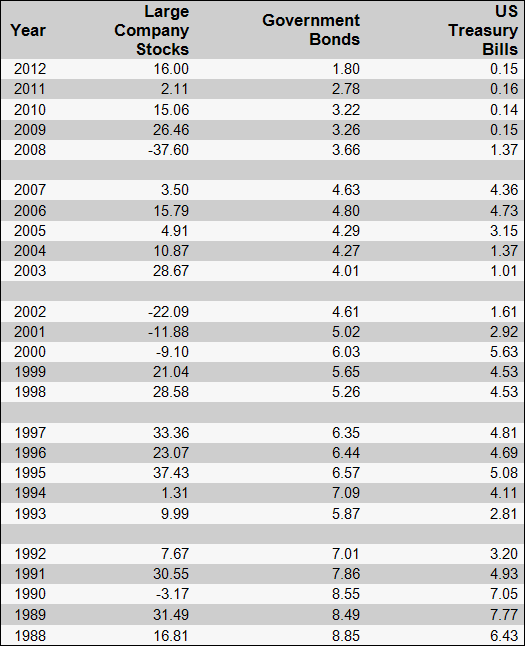| About Us | Newsletter | Youth Support | Career | Activities | Contact |
Newsletter
2015 2nd Edition (Other Editions)
ASSET ALLOCATION
Academic studies conducted over the last twenty years have shown the asset allocation decision is the most important variable in controlling the return from a portfolio of assets. This means the importance of the percentage of your money invested in stocks, bonds, real estate, precious metals, cash, etc., may far outweigh the effects of the individual security decisions. Your asset allocation is more critical to your long-range portfolio goals than the individual securities choices that you have agonized over, time and again.
The purpose of the asset allocation decision is to weigh the expected rewards from an investment against the risk associated with that decision. This information, with the investor's tolerance for risk, is the primary factor necessary to determine a proper asset allocation mix.
This mix will depend on an individual's circumstances. For example, a young, single individual with a steady income can afford to take more risk in his or her asset allocation mix than can a retired person with little excess income.
Most investors recognize the importance of having an equity position in their portfolio. It is a means of gaining capital appreciation, which can offset the negative influence of inflation on personal wealth. However, equities carry an expensive price tag, which is that they can also produce losses over certain periods of time. This element of risk and volatility is what investors hope to eliminate with asset allocation.
By allocating investment dollars among many classes of assets, you diversify your portfolio. This reduces, but does not eliminate risk. Generally, as the economics and the politics of the world change, certain types of assets will perform well; others will perform extremely well, while some will perform poorly. You will have periods of time when equities do poorly. However, this poor performance might be offset by increasing values for bonds or T-Bills. The Table of Returns for various asset classes illustrates this.
ALLOCATION TECHNIQUES
There are two primary ways of allocating assets. The first method is to use a stable policy over time. Based on your income needs and risk tolerance, you might follow a balanced strategy. This might require putting twenty five percent of your dollars in each class of assets, such as stocks, bonds, cash and real estate. Then each quarter or year, you rebalance those dollars back to your original allocation of twenty five percent in each class. This forces you to sell some of the best performing assets, while buying more of the weakest performers. This allocation system eliminates the need to decide on the expected return for each class and instead allows for more stable returns over long time periods.
The second means of allocating assets is through an active strategy. In this method, you first determine your tolerance for risk and your long-term goals. Then you allocate ranges of your total portfolio you will invest in each class. Thus, if you need a good mix of growth and income, you might allow your investment in stocks to range from 35% to 65% of your portfolio based on the market. You would develop these ranges for each asset class.
This active strategy involves predicting the performance you expect from each class of asset over the next year. If you believe we are in time that is conducive to good returns from stocks, you would put the maximum amount of dollars into common stocks or common stock mutual funds.
Therefore, you would be lowering the dollars invested in other asset classes. And, if you believe that we are in great risk for the markets, you would put more dollars into cash as a means of protecting your portfolio.
As you can see, this active strategy requires much homework and a good knowledge of the financial markets and what impacts them. It is a higher risk strategy, because if you make the wrong decision, you put your portfolio at a greater risk than if you had followed a stable strategy.
MANAGING RISK
Asset allocation may reduce or increase risk, depending on how you use it. A stable, fixed allocation reduces risk by keeping you in each market all the time. An active strategy may increase risk since you are making commitments on particular asset classes based on your outlook for those categories.
This can be beneficial by protecting your assets in weak markets and allowing faster growth in strong markets, but it can prove to be seriously damaging if you make the wrong decision.
Furthermore, recent history has shown us that asset allocation strategies provide little risk protection in a broadly falling market that extends for a long period of time and crosses all categories.
Therefore, this is an individual decision that is different for everyone. It requires a good understanding of your goals and your tolerance for risk. It also requires an honest answer about how well you will stay current with the financial markets.
Asset Allocation involves spreading funds among diversified asset classes of investments such as equities fixed income and cash equivalents. It is a tool of the Modern Portfolio Theory that allows an investor to classify, estimate and control both the kind and the expected risk and return but it is not a guarantee against loss.
HISTORICAL COMPARISONS - ANNUAL PERCENTAGE RETURNS
The following chart, adjusted for inflation, shows some of the fluctuations of different asset categories.

Sources: Large Company Stocks - S&P 500 Government Bonds - 10 Year US Government Bonds US Treasury Bills - 3-month T-Bills Financial Planning Consultants, Inc.
